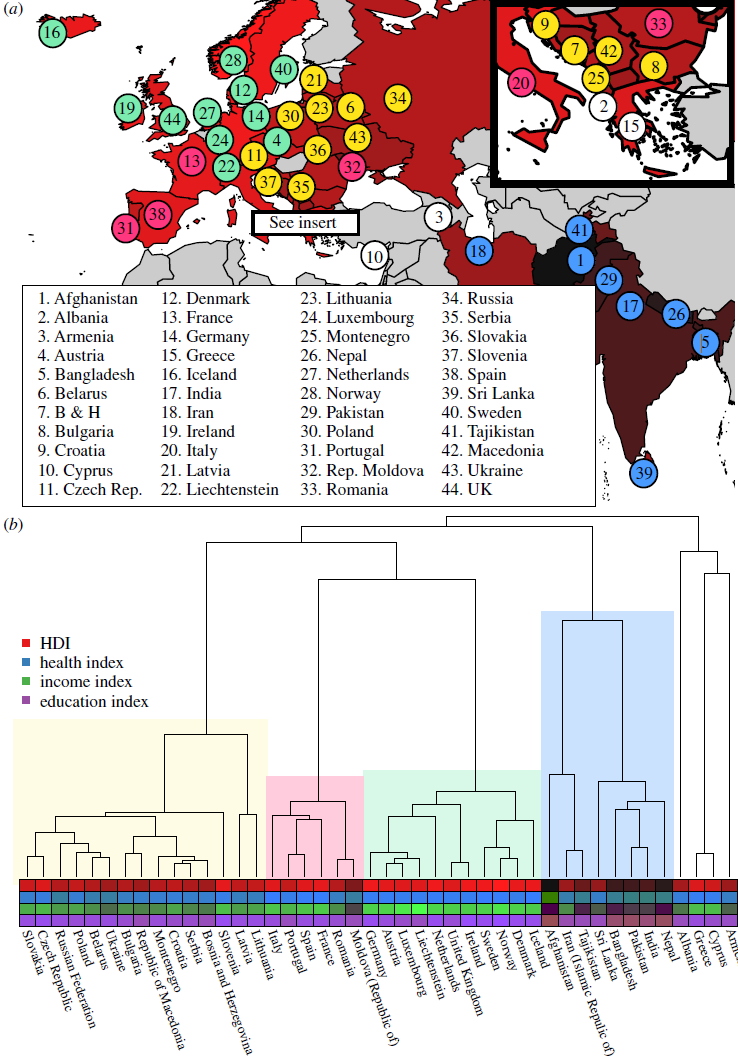Open access Deep cultural ancestry and human development indicators across nation states, by Roland B. Sookias, Samuel Passmore, & Quentin D. Atkinson, RSOS (2018).
Abstract (emphasis mine):
How historical connections, events and cultural proximity can influence human development is being increasingly recognized. One aspect of history that has only recently begun to be examined is deep cultural ancestry, i.e. the vertical relationships of descent between cultures, which can be represented by a phylogenetic tree of descent. Here, we test whether deep cultural ancestry predicts the United Nations Human Development Index (HDI) for 44 Eurasian countries, using language ancestry as a proxy for cultural relatedness and controlling for three additional factors—geographical proximity, religion and former communism. While cultural ancestry alone predicts HDI and its subcomponents (income, health and education indices), when geographical proximity is included only income and health indices remain significant and the effect is small. When communism and religion variables are included, cultural ancestry is no longer a significant predictor; communism significantly negatively predicts HDI, income and health indices, and Muslim percentage of the population significantly negatively predicts education index, although the latter result may not be robust. These findings indicate that geographical proximity and recent cultural history—especially communism—are more important than deep cultural factors in current human development and suggest the efficacy of modern policy initiatives is not tightly constrained by cultural ancestry.

Yet another questionable paper using bioinformatics, including many confounding factors, applying the “Catholic-versus-Protestantism”-efficiency kind of thinking (based on the traditional anti-Catholicism prevalent in certain regions even today) into modern religious distribution, linguistic (“cultural”) phylogenies, and modern borders of nation-states – instead of (traditional or modern, micro- or macro-) regions or cities, which would probably reveal other kind of differences.
I guess we will get a renewed New Age Inglehart–Welzel cultural map of the world rather soon.